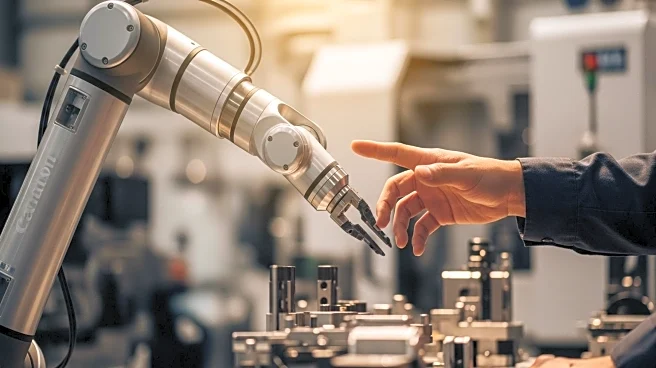What's Happening?
The share of manufacturing workers in the unorganised workforce has decreased significantly, according to recent government data. In the April-June 2025 quarter, the number of workers employed in the manufacturing sector declined by 9.3 percent, dropping from 369,000 in the previous quarter to approximately 335,000. This reduction has led to a decrease in the share of manufacturing workers within the total unorganised workforce, from over 28 percent in the January-March quarter to 26 percent in the subsequent quarter. Meanwhile, the services sector has seen an increase in its share, becoming the main employer with more than a third of the unorganised sector's workforce.
Why It's Important?
The decline in manufacturing employment within the unorganised sector highlights shifting dynamics in the workforce composition. As manufacturing loses ground, the services sector's growing share suggests a transition towards service-oriented employment. This shift may impact economic policies and labor market strategies, as policymakers and industry leaders address the changing needs of the workforce. The reduction in manufacturing jobs could affect economic growth and stability, particularly in regions reliant on manufacturing industries.
What's Next?
The ongoing changes in workforce composition may prompt stakeholders to reassess strategies for supporting the manufacturing sector. Efforts to revitalize manufacturing employment could include initiatives to enhance skill development and technological integration. Policymakers may consider measures to balance the growth of the services sector with the needs of manufacturing industries. Additionally, businesses may explore opportunities to adapt to evolving workforce trends, potentially investing in automation and innovation to sustain competitiveness.
Beyond the Headlines
The decline in manufacturing employment may have broader implications for social and economic structures. As the workforce shifts towards services, there may be changes in income distribution and job security. The reduction in manufacturing jobs could also influence cultural perceptions of work, as traditional manufacturing roles evolve or diminish. Long-term impacts may include adjustments in educational priorities and workforce training programs to align with emerging industry demands.











